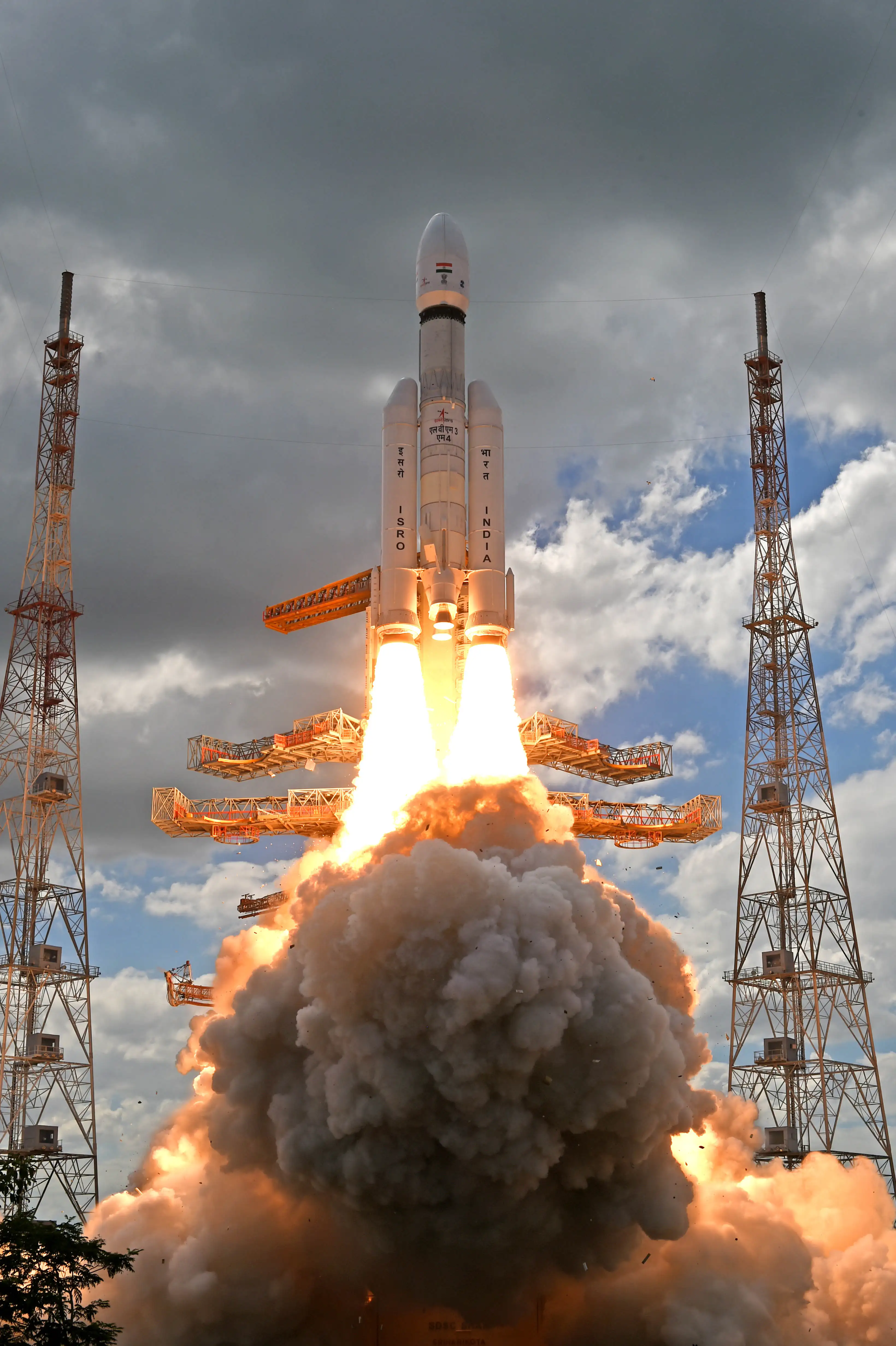Chandrayaan | Lunar exploration | Mangalyaan | Mars Orbiter Mission | Cost-effective approach

On August 23, Chandrayaan-3 achieved a historic milestone in exploring the lunar surface and collecting invaluable scientific data — making India the fourth country to land on the moon and the first to reach close to the lunar south pole.
Chandrayaan-3 consisted of a lander named ‘Vikram’ and a rover named ‘Pragyan’.
A rover is a planetary surface exploration vehicle designed to move across the solid surface on planets or other planetary mass celestial bodies such as the moon and tasked to collect information on terrain while the lander is a protective ‘shell’ that houses the rover in its belly.
Behind this lunar odyssey is the Indian Space Research Organisation (ISRO) which had already launched Chandrayaan-1 and Chandrayaan-2 missions in 2008 and 2019 respectively.
Formed in 1969, ISRO is the Indian space agency for space research, technology, exploration, and satellite development; headquartered in Bengaluru. ISRO replaced its predecessor INCOSPAR (Indian National Committee for Space Research) which was formed in 1962 by Prime Minister Jawaharlal Nehru and one of the founding fathers of the Indian space program scientist Vikram Sarabhai.
ISRO had also undertaken its first interplanetary mission — the Mars Orbiter Mission (Mangalyaan) in 2013. The Mangalyaan mission made India the fourth space agency globally to navigate the Martian orbit after NASA, Roscosmos, and the European Space Agency.
While the recent landing comes after its historic Aryabhatta program that was almost 50 years ago. On April 19, 1975, ISRO launched the Aryabhata satellite which marked India’s advent into the space era. The entire satellite (some 360 kg in weight) was designed and built by ISRO to conduct experiments in X-ray astronomy, aeronomics, and solar physics. Aryabhata is India’s 5th-century astronomer and mathematician.
In 1980, ISRO launched India’s first Satellite Launch Vehicle (SLV-III) that successfully deployed the Rohini satellite in near-earth orbit. The project was helmed by A. P. J. Abdul Kalam who later went on to serve as the 11th president of India from 2002 to 2007.
What sets ISRO peculiar from the other space agencies is its cost-effective approach to space missions, delivering remarkable achievements within budget constraints.
Chandrayaan-3 budget is about USD 75 million — 2.6 folds less than Roscosmos' similar lunar mission, Luna-25 (USD 200 million). A comparison of Chandrayaan-3's budget is now drawn with Interstellar’s production budget — a 2014 film on a space adventure with reportedly a USD 165 million development budget. Similarly, the Mars Orbiter Mission (Mangalyaan) incurred a cost of USD 74 million, whereas NASA’s similar Mars mission, Maven, had a budget of USD 582.5 million.

ISRO has also developed space launch vehicles like Polar Satellite Launch Vehicle (PSLV) and Geosynchronous Satellite Launch Vehicle (GSLV) for satellite deployment, and has launched satellites for communication, navigation, disaster response, weather forecasting, Earth observation, and scientific research.
At present, ISRO has two major satellite systems in operation — the Indian National Satellite System (INSAT) for communication services, and the Indian Remote Sensing Programme (IRS) satellites for management of natural resources.
Read More Stories
Kathmandu’s decay: From glorious past to ominous future
Kathmandu: The legend and the legacy Legend about Kathmandus evolution holds that the...
Kathmandu - A crumbling valley!
Valleys and cities should be young, vibrant, inspiring and full of hopes with...
Israel attacks Iran’s nuclear and military sites, Iran retaliates with drones
In a latest escalation in West Asia, Israel targeted nuclear and missile facilities...